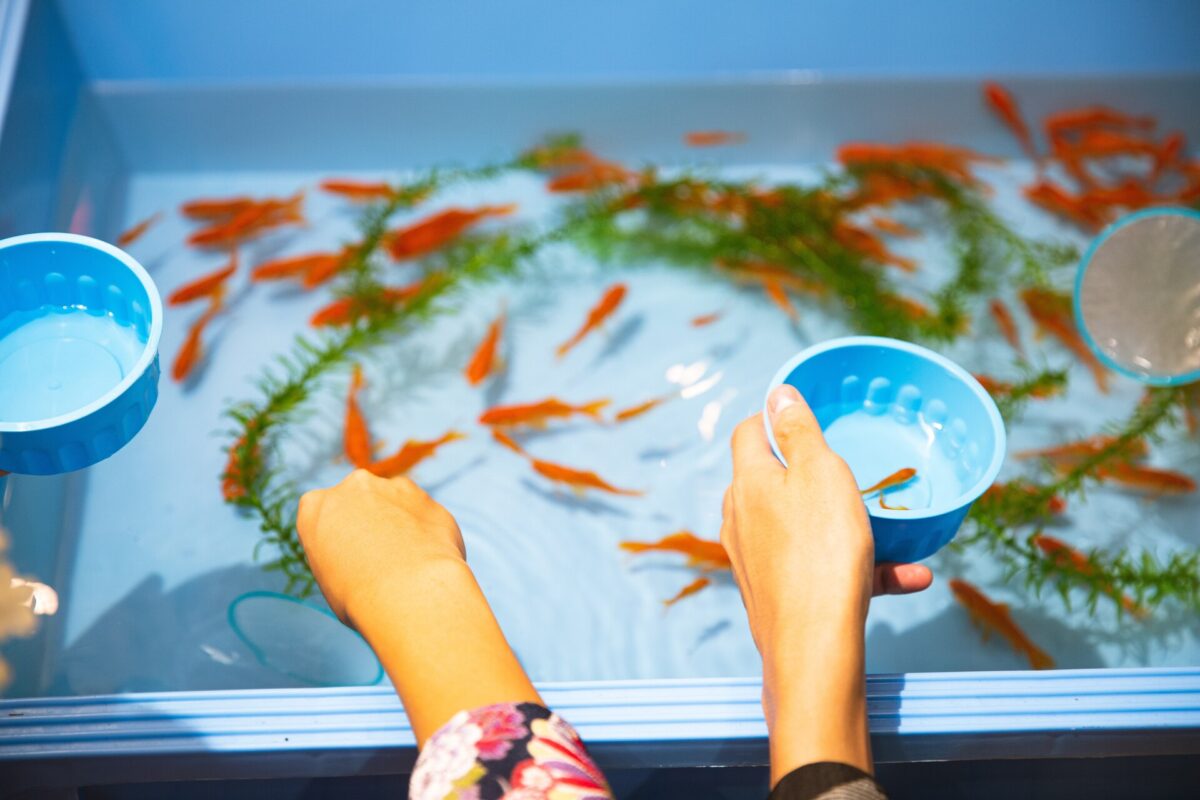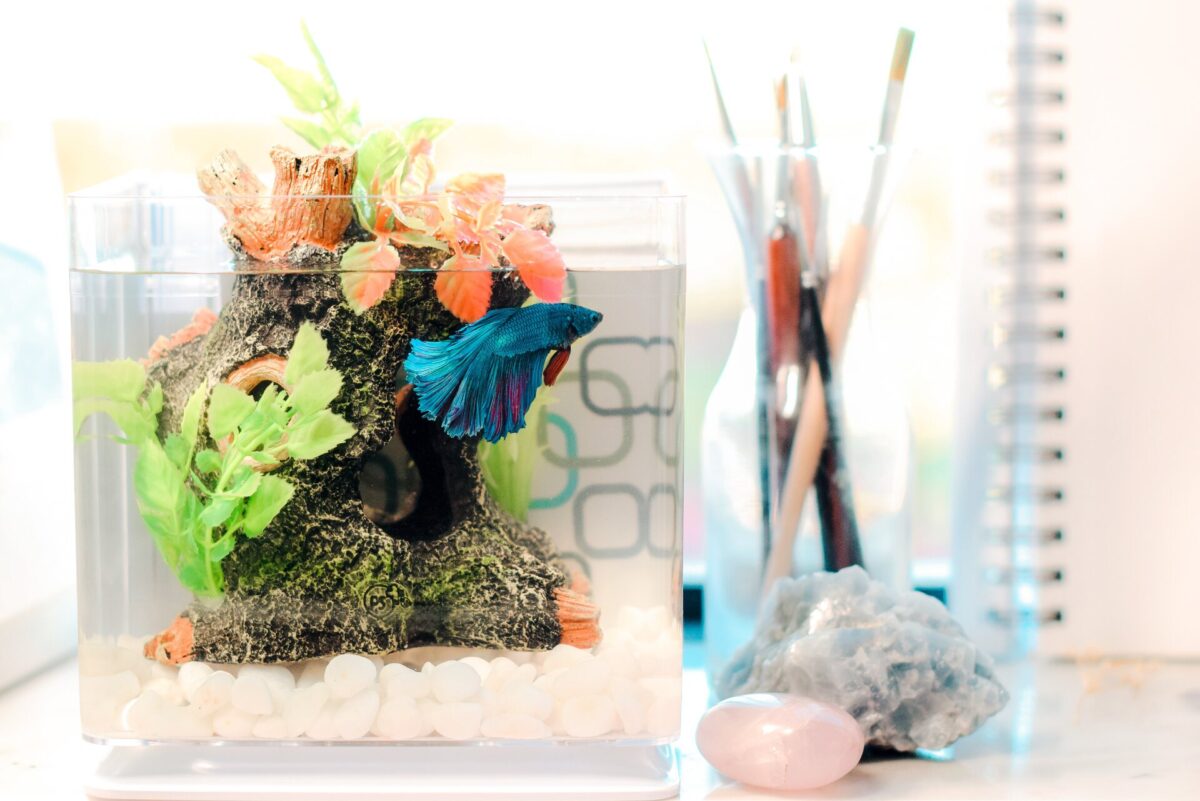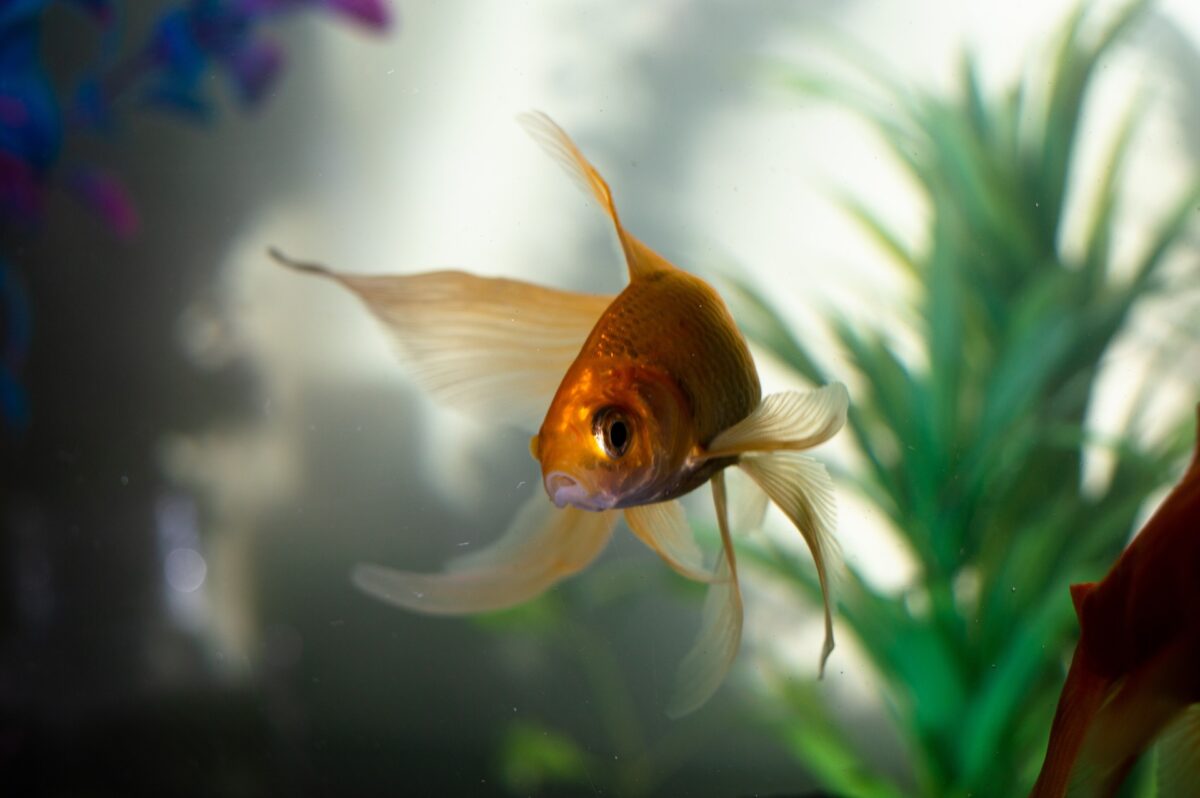If you are wondering how to move an aquarium when moving house, evaluate whether this relocation is feasible. If the answer is positive, plan your relocation ahead of time and set a relocation date. Secure your pets in temporary containers, reduce the water levels in the aquarium, and safely remove accessories and other equipment. Use insulated containers for the relocation and stop the feeding at least 24 h before the relocation. If you find it tiresome to do it yourself, book the specialized professionals to do it for you.
Top 10 Essential Tips on How to Move a Fish Tank Across the Country
Relocating can be stressful, especially when you’re transporting delicate ecosystems. If you’re puzzled about how to move a fish tank across the country without risking the health of your aquatic companions, you’re not alone. Let’s deep dive together into our essential tips on how to pack an aquarium for moving cross country and ensure calm waters and a smooth transition for your underwater world.


#1 Before You Figure Out How to Move a Fish Tank, Evaluate the Feasibility of the Relocation
Relocating your pets in the aquarium, especially over long distances, isn’t as simple as packing up other household items. Before diving into the logistics of how to do it, it’s crucial to consider:
- Feasibility of the relocation – not all tanks are designed for easy movement, and size, weight, and setup complexity can pose challenges,
- Assessment of practicality – it’s essential to ensure that the new location matches their needs in terms of water quality, temperature, and overall habitat,
- Can the tank survive the transit conditions – with careful planning and the right equipment, the structure can survive transit, and stable water parameters can be maintained during the relocation,
- Fish well-being – different species have varied stress thresholds, so be well-informed on how adaptable your pets are to changes and whether they can endure the whole journey,
- Exploring alternatives – sometimes, it might be less stressful if you could find them a new home locally and set up a new tank at your destination. Always keep their welfare at the forefront of any decision.
In essence, every aspect of the relocation must be weighed with careful consideration, ensuring that the decision taken is in the best interest of your pets.


#2 Plan Ahead and Create a Moving Timeline
When you map out each step of the relocation process in advance, you minimize the potential for unexpected hiccups or last-minute chaos. By setting a timeline, you allocate ample time for each task, ensuring nothing is rushed or overlooked.
This foresight allows for contingencies, giving you the flexibility to address unforeseen challenges without panic. Furthermore, a well-laid-out relocation plan offers peace of mind, reduces relocation stress, and ensures a more organized, successful, and efficient relocation.
Set a Moving Date Well in Advance to Allow For Adequate Preparation
In essence, locking in a date well before the relocation is akin to charting a clear course, ensuring you’re well-prepared and poised for a seamless transition. By committing to a specific day, you anchor all your relocation-related activities around a fixed point, granting you a clear timeline for preparation.
This not only helps in breaking down tasks into manageable chunks but also in securing relocation essentials such as hiring movers, picking the right services, or renting the right size relocation truck, which often requires bookings ahead of time. Furthermore, an established date provides clarity for everyone involved, allowing anyone assisting you to adjust their schedules accordingly.
Create a Detailed Moving Schedule With Specific Tasks and Deadlines
A couple of weeks before the move, research the specific requirements of each species to ensure a safe and stress-free transition. It might be beneficial to downsize for a move. Deciding which tank decorations and equipment are worth keeping, what is in good condition and worth selling in a garage sale or on platforms like Craigslist or Facebook Marketplace, and getting rid of old or malfunctioning items.
If your tank is large or houses delicate species, consider seeking out specialized moving services. Purchase packing materials such as stress coats, battery-operated air pumps, and temporary containers for transporting your aquarium. Also, remember to notify relevant entities about your address change, so your pets can reach you without delay.
On the moving day, place your pets in temporary containers filled with their original tank water to minimize anxiety. Once in the new location, prioritize setting up the tank, using the same water, and adding dechlorinated water as needed. Ensure all equipment is running smoothly, and once the environment is stable, gently reintroduce your pets. In the subsequent days, monitor their state for signs of distress or illness and ensure the tank’s parameters remain stable.


#3 Double-Check Local and State Regulations
It’s imperative to thoroughly research and adhere to any stipulated guidelines related to transporting live fish across jurisdictions. Some states may have specific mandates concerning invasive or exotic species, and non-compliance can lead to penalties.
To preempt any potential roadblocks, it’s wise to secure any necessary permits or certifications well ahead of your relocation. Consulting with local authorities or aquatic experts can provide clarity on these regulations and ensure you’re not unintentionally in breach.
Moving
Our mission is to bring high quality, long distance moving services to every customer.
Packing
Our expert moving teams are trained to ensure the safety of your personal belongings.

Storage
Cross Country Moving Company is the most trusted name in auto industry in the country.
#4 Reduce the Water Level in the Tank
It’s vital to reduce the water level in your aquarium when preparing it for relocation. By doing so, you not only significantly cut down the weight, making the tank more manageable to relocate, but you also mitigate the risk of water spills during transit which can be harmful to both the tank’s inhabitants and stuff surrounding it.
However, it’s essential to retain a sufficient amount of the original water, as this helps in preserving the beneficial bacteria that are crucial for maintaining a balanced aquatic ecosystem. Additionally, when the water level is lowered, it’s imperative to provide extra support and stabilization to the tank, ensuring it doesn’t tip over, compromising the safety of your pets and the integrity of the tank itself.
Remove Decorations and Accessories
Carefully extract plants, rocks, and other embellishments before moving an aquarium from house to house while ensuring the safety of both the items and their inhabitants. Once removed, these accessories should be meticulously packed, taking precautions against potential breakage during transit. Cushion delicate items with bubble wrap or soft materials, and place them in sturdy boxes.
For a smoother reassembly process at your new location, label each box or bag with its contents and, if possible, note down the placement or arrangement. Organizing and labeling not only preserves the aesthetics of your tank but also ensures a swift and efficient setup, reducing the stress on your aquatic pets during re-establishment.
Check the video below for some tips on how to clean your aquarium accessories.
#5 Secure the Fish in a Temporary Container
Begin by obtaining a suitable transport container or bag specifically designed for aquatic life. Instead of hastily transferring your pets, introduce them gradually to this temporary environment, allowing them time to acclimate, minimizing potential stress.
Equally crucial is ensuring that they have an ample supply of oxygen throughout the journey. Sealable bags with a mix of water and air or specialized containers with oxygen pumps are ideal for this purpose. Lastly, insulate the transport container, especially if traveling through different climate zones, to maintain a consistent environment.


#6 Safely Pack and Transport the Filter and Equipment
Ensuring the secure packing and transport of the filter and associated equipment is of paramount importance when relocating an aquarium. Mishandling can result in breakages, malfunctions, or the need for costly replacements. By safely relocating these components, you ensure the longevity of your setup, facilitating a smoother re-establishment of the tank at your future location.
Detach and Properly Secure the Filter and Other Equipment
Begin by unplugging and carefully removing the filter, ensuring any media within it remains moist to preserve beneficial bacteria. Wrap it in a soft cloth or bubble wrap to provide cushioning against impacts. Properly secure all items in a labeled box, separating them with dividers or additional padding if necessary.
Similarly, for other equipment such as heaters, lights, and pumps, delicately detach them from their positions, keeping in mind to handle any electrical components with care. Once removed, each piece should be wrapped individually to prevent damage from friction or jostling during transit.
Pack the Filter Media Separately to Maintain Beneficial Bacteria
The filter media plays a pivotal role in sustaining a healthy aquatic environment, acting as a haven for beneficial bacteria that aid in breaking down toxins and maintaining water quality. When relocating, it’s essential to pack the filter media separately.
By doing so, you’re taking steps to preserve the bacteria colony, ensuring a seamless transition for your fish upon re-establishing the tank. To achieve this, place the media in a sealed bag with some tank water, keeping it moist and oxygenated. Avoid exposing it to extreme temperatures or cleaning agents, as this can harm the bacteria.


#7 Use Insulated Containers for Long Distances
For long-distance relocations, using insulated containers becomes indispensable for safeguarding the well-being of your pets. These containers are specifically designed to regulate temperature, ensuring a consistent environment even during extended transits. By introducing temperature control measures such as cool packs, you can further maintain the water’s ideal conditions, preventing any drastic shifts that might stress them.
It’s also crucial to periodically monitor temperature levels throughout the journey, making adjustments as necessary. This proactive approach ensures your aquatic companions remain in a stable environment, reducing potential shock and health complications and underscoring the commitment to their safe and comfortable transport.
#8 Avoid Feeding the Fish Before the Move
It’s advisable to avoid feeding your pets for at least 24 hours before the relocation. This practice serves a dual purpose. Firstly, it reduces the amount of waste they can produce if well-fed, thus maintaining a cleaner environment in the transport container. Excess waste can deteriorate water quality rapidly, increasing the risk of health issues for your pets.
Secondly, fasting aids in reducing potential stress for the aquatic inhabitants, as they are less likely to experience digestive discomfort during transit. Upon arrival at the new location and after ensuring the tank conditions are optimal, you can then gradually reintroduce food, ensuring your pets are well-cared for and can acclimatize comfortably to their refreshed surroundings.


#9 Choose the Best Cross-Country Moving Company to Help You With the Preparations
When relocating to another state, you should know that choosing the most competent long-distance moving company is paramount. The Cross Country Moving Company understands that it’s not just about transporting items. We are well aware that it is about entrusting your possessions, including sensitive ones like aquariums, to experts who understand their value.
Our company stands out in this regard. With a blend of professionalism, experience, and care, we’ve consistently met the unique needs of our diverse clientele. Our long-distance movers will ensure that the smallest trinkets are treated with the respect and caution they deserve. Opting for our professional cross-country movers will guarantee your peace of mind and that your belongings are handled with the utmost precision and care.
Consider Using More Than One Cross-Country Moving Service
Diversifying your approach to relocation by employing multiple long-distance moving services can greatly enhance the efficiency and convenience of your relocation. For instance, our specialized packing service ensures your belongings, from delicate and fragile items all the way to bulky furniture, are safely wrapped and secured for transit. On the other hand, our auto shipping service handles the logistical challenges of transporting your vehicle over long distances. This means you don’t have to endure the wear and tear or the stress of a long drive.
Additionally, our storage services can be invaluable, especially if there’s a gap between your move-out and move-in dates or if you need to declutter and store the aquarium temporarily. By integrating our cross-country moving services, you will streamline your relocation process while ensuring that each aspect of this journey is managed by our professionals. Hiring our movers will leave you with fewer tasks to juggle, allowing for a smoother transition to your new home.


#10 Acclimate the Fish to the New Tank Gradually
Once you’ve successfully relocated, it’s crucial to reintroduce your pets to their tank in a measured and gentle manner. Rather than a hasty transition, allow your aquatic companions time to acclimate to the new water conditions. This can be achieved by slowly mixing the transport water with the water in the tank, ensuring a gradual adjustment to any changes in parameters like pH or temperature.
As you monitor these conditions, you can then begin to reintroduce decorations and accessories, ensuring the environment closely mirrors their previous setup. The key is to provide a stress-free environment, allowing them ample time to adapt and thrive in their rejuvenated habitat. This thoughtful approach ensures their health, comfort, and overall well-being in the new setting.


Stick To Our Tips, and You’ll Relocate Your Pets in No Time
Adhering to our expertly curated tips ensures that your aquatic pets experience a smooth and stress-free relocation journey. Every piece of advice has been formulated with the well-being of your fish in mind, drawing on extensive knowledge and practical experience in the field.
And if you’re ever in doubt or need more personalized guidance, Cross Country Moving Company is here to aid you every step of the way, so don’t hesitate to contact us. We’re here to help organize and facilitate your relocation, ensuring you have ample time to help your cherished pets adjust comfortably to their new home. Relocating can be tiring, but with the right insights, you’ll have your pets happily swimming in their new home in no time.
FAQ
How Do I Relocate My Fish Tank Across the Country Safely?
To relocate your aquarium safely, initiate with a thorough plan. Start by removing decorations and reducing the water level. Secure your pets in special transport containers.
Disassemble and safely pack the tank’s equipment, especially the fragile parts. If possible, consider hiring professionals who specialize in this kind of relocation and have experience dealing with the intricacies involved.
Is It Possible to Relocate a Fish Tank Long Distances Without Stressing the Fish?
Absolutely. Moving an aquarium is possible, but it requires careful planning and preparation. Fish are sensitive to sudden changes in their environment, such as water temperature, pH, and ammonia levels. To ensure their well-being, a gradual acclimation process, maintaining stable water conditions, and minimizing any disturbances during the relocation is crucial.
What Steps Should I Take To Prepare My Fish and Tank for Relocation?
Begin by reducing the quantity of food you give pets a week before the relocation to decrease waste in the tank. Two days prior, clean the tank without stressing them. On the big day, safely transfer pets to dedicated transport containers filled with water from the tank.
This will provide them with familiar water conditions. All equipment, such as heaters, filters, and lights, should be detached and packed separately. Clearly label each item so reassembly becomes straightforward at the new location.
What Type of Container Should I Use to Transport the Fish During the Journey?
Containers or bags specifically designed for aquatic transportation are optimal. These should have sufficient oxygen for the journey’s duration. Insulation is equally important to maintain consistent temperatures and protect the pets from sudden fluctuations.
How Can I Maintain the Water Quality and Temperature During the Move?
Using insulated containers or cool packs can help in regulating the temperature. Beyond temperature, it’s important to regularly check the water’s pH and ammonia levels. A battery-operated aerator can provide a continuous oxygen supply, ensuring that they remain healthy.
What Are the Best Transport Methods for Moving a Fish Tank Long Distance?
Specialized moving services with expertise in aquatic relocation can provide the best care and handling. If you’re self-transporting, choose a vehicle where environmental conditions, including temperature, can be consistently monitored and adjusted.
Are There Any Specific Regulations or Permits I Need to Consider When Transporting Live Fish?
Transport regulations can vary between states and countries. Before moving, research and acquire any necessary permits or certifications related to transporting live aquatic species. This ensures a legal and smooth journey.
How Can I Ensure a Smooth Transition for My Fish When They Arrive at the New Location?
Upon arrival, reassemble the tank, making sure it’s clean, and the equipment is functioning properly. Before reintroducing your pets, ensure the tank conditions are optimal. Watch for signs of stress and address any concerns promptly.
Do I Need to Acclimate the Fish to the New Tank, and How Should I Do It?
Acclimation is essential. To reduce shock, slowly mix the transport water with the new tank water. This slow introduction allows your pets to adjust to potential differences in water chemistry, minimizing stress.
Can I Seek Professional Help to Move My Fish Tank Across the Country?
Many moving services specialize in transporting aquariums. Research and hire a reputable company that has expertise and positive reviews in this area.
What Precautions Should I Take To Prevent Damage to the Tank and Equipment During the Move?
Tanks, especially glass ones, are fragile. Use bubble wrap or similar padding materials to protect the tank and its equipment. Ensure they are securely positioned in the vehicle to prevent movement and potential impacts.
How Can I Find a Reliable and Reputable Transportation Service for My Fish Tank?
Start with online reviews and forums dedicated to aquarium enthusiasts. Word-of-mouth recommendations from fellow hobbyists can also be invaluable. Once you’ve shortlisted potential cross-country moving companies, ask about their experience, protocols, and any guarantees they offer for safe transportation.
What Should I Do if My Fish Shows Signs of Stress or Illness After the Move?
Monitor your pets closely, ensure optimal water conditions, and provide a quiet environment. Consider adding stress-coat products. If symptoms persist, consult an aquatic veterinarian or specialist.
Is It Necessary to Quarantine the Fish After the Relocation?
Quarantining is a proactive step, especially if you’re introducing the fish to an existing community. This prevents potential disease spread and gives your pets a chance to recover from the relocation’s stress.








